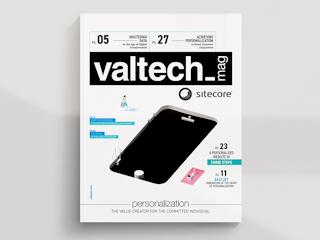Understand the problem
Traditionally when building products, people and teams have focused on building an output (a solution, a deliverable), rather than understanding a problem.
Modern practices are changing this, looking to solve the problem through an outcome (an experience). A simple example is when renewing your passport; we could create a service just around sending you a new passport, but the reality is we are designing a service to allow you to verify yourself, be that in person or online, and importantly travel the world.
When it comes to us as individuals the same pattern exists for working practices; are we sat at our desks/ vehicles/ production lines/ operating tables delivering to an output (hours at work) or an outcome (adding value to a business goal or customer experience)? We can only strive for the latter!
Unlocking Value
The workplace is a busy environment where the ability to deliver effectively and efficiently has a direct correlation to end user benefits. With margins tight, it is important that time spent is time that adds value.
The ability to add value though is a problem. This is twofold, firstly knowing what tasks add value (I can’t help you here – but check out your business’s objectives or strategic goals), secondly it is understanding the barriers to adding value (I can help a bit here).
Back in February I conducted research with users of Sitecore, a Gartner leading Customer Experience platform, to understand how they work and ultimately try and provide a way to improve their ability to add value.
We reached out to all types of users (developers, content authors, strategists, trainers…) speaking to some of the top experts within the Sitecore Community. The feedback was pretty interesting. Looking at the chart below shows groupings of barriers faced by users. Some we knew would be there (senior buy-in) but access to people, ability to deliver, ability to make a decision and just having time shows clearly that this isn’t a technical problem, this is a process problem.

Response themes to Sitecore Survey (what are the barriers to carrying out day to day tasks).
Unlocking Ability
With time of the essence, we need to give CMS users the ability to deliver more of what is of value quicker whilst maintaining governance, security or reliability.
Speaking to the Sitecore community, specifically at a role level; we spoke at depth into the barriers and the role/ tasks users where trying to carry out. We wanted to find out what they were saying, thinking and doing.
Developers, for example, were up against it. Trying to carry out their tasks but also fixing/ peer reviewing the work of others. Co-workers demanded them at all times of the day and ultimately they were hampered with a client’s environment.
Strategists, again are busy, always away from their desks; but their priorities are focused on KPI’s and delivering financially to senior management.
Content authors, unlike the other users, had little direction as they are often away from digital teams. The only time they had direction was a demanding stakeholder on their doorsteps. The process lets them down, getting pages unlocked, pages approved, pages publishing.
With the roles identified, we were able to identify accurate user needs; for example:
- For a developer; the need to deploy or resolve code at any time ensuring a stable platform
- For a strategist; the need to see how optimisation tests are performing during a meeting ensuring profits are maximised
- For a content author; the need to publish or approve pages; ensuring the latest campaign is live
Despite the various roles and differing needs, we can see the commonality is value. Value to act fast, anywhere, anytime.
Internet of things
We need to be able to let them deliver on the move, working remotely or just simply away from the desk.
So where does the Internet of things (IoT) come into this? Based on the research mentioned above, being able to add value with limited time, focuses us on delivery. We know the current environments often rightfully hinder the ability to deliver. Location, networks, time of day are capped limiting delivery. However, IoT and mobile tech, in general, uncaps these factors.
- IoT extends wireless access enabling working on the move
- Growth in mobile techs, means we are always connected
- Connectivity to systems is growing day by day
A game changer here is the ability to complete the same tasks using different methods (multimodal) in different locations. Whilst IoT focuses on tools to trigger commands (Google Home, Alexa…) the reality is we can trigger commands through a range of apps and messaging systems. Slack, facebook messenger, skype and twitter are just a few of the ways we can utilise IoT.
With the removal such as barriers of location, time of day we enable users to complete needed tasks. With tasks being completed, quickly and efficiently we deliver value. With us adding value, we create better experiences and increase bottom line to our organisations.







